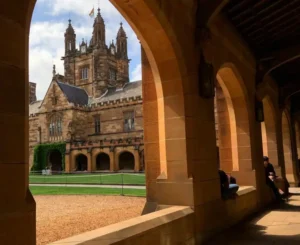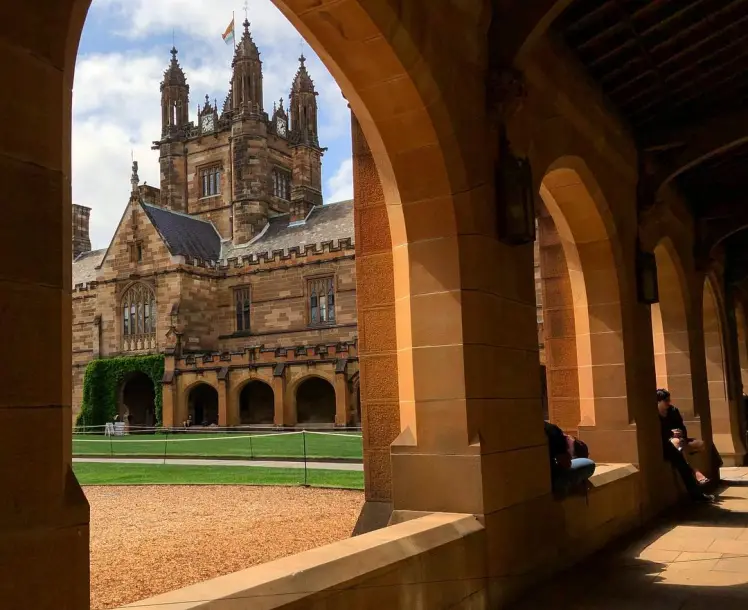Australia lowers the cap on foreign students at fifteen institutions, with a 7% reduction in Sydney and Melbourne. Critics refer to caps as “arbitrary,” citing concerns about the impact on the industry and employment losses.
The Australian government’s recent adjustments to the cap on international students have caused a stir in the higher education industry and given rise to many discussions and worries.
The number of overseas students admitted to 15 Australian universities would drop by 7% by 2025, including some of the most esteemed schools in the nation, such the University of Sydney and the University of Melbourne. This indicates that 11,900 and 9,300 international students, respectively, will be their new caps.
Here is a summary of the universities affected by the new caps:
| University | Onshore International Proportion of Enrolments (2023) | 2019 Number of Overseas Student Commencements | 2023 Number of Overseas Student Commencements | Indicative 2025 Cap | Percentage Change |
|---|---|---|---|---|---|
| Australian Catholic University | 13% | 1,273 | 1,580 | 1,700 | 7.5% |
| Australian National University | 40% | 2,807 | 3,972 | 3,400 | -14.5% |
| Central Queensland University | 23% | 3,752 | 2,948 | 3,000 | 2% |
| Charles Darwin University | 26% | 523 | 1,997 | 2,200 | 10% |
| Charles Sturt University | 2% | 2,994 | 162 | 1,000 | 517% |
| Curtin University | 17% | 2,118 | 3,646 | 3,500 | -4% |
| Deakin University | 21% | 5,768 | 5,448 | 5,800 | 6.5% |
| Edith Cowan University | 25% | 2,488 | 3,722 | 3,600 | -3% |
| Federation University Australia | 35% | 4,019 | 2,306 | 1,100 | -52% |
| Griffith University | 20% | 2,830 | 3,817 | 3,700 | -3% |
| James Cook University | 23% | 1,135 | 1,962 | 2,200 | 12% |
| La Trobe University | 21% | 3,660 | 4,095 | 4,100 | 0.1% |
| Macquarie University | 23% | 4,036 | 4,556 | 4,500 | -1% |
| Monash University | 33% | 9,998 | 8,310 | 10,000 | 20% |
| Murdoch University | 39% | 1,780 | 5,272 | 3,500 | -34% |
| Queensland University of Technology | 19% | 3,124 | 4,618 | 4,500 | -2.5% |
| RMIT University | 29% | 6,599 | 6,409 | 6,600 | 3% |
| Southern Cross University | 20% | 2,109 | 939 | 1,300 | 38% |
| Swinburne University of Technology | 24% | 2,397 | 4,681 | 4,500 | -4% |
| The University of Adelaide | 30% | 3,314 | 3,155 | 3,800 | 20% |
| The University of Melbourne | 41% | 8,600 | 10,000 | 9,300 | -7% |
| The University of New South Wales | 39% | 7,883 | 11,075 | 9,500 | -14% |
| The University of Queensland | 39% | 6,888 | 7,040 | 7,050 | 0.1% |
| The University of Sydney | 46% | 11,027 | 12,790 | 11,900 | -7% |
| The University of Western Australia | 25% | 1,536 | 2,742 | 3,000 | 9% |
| University of Canberra | 22% | 912 | 1,422 | 1,500 | 5% |
| University of the Sunshine Coast | 10% | 1,188 | 578 | 1,200 | 108% |
| University of Wollongong | 29% | 2,980 | 4,042 | 3,700 | -8% |
| Victoria University | 33% | 2,652 | 4,046 | 3,600 | -11% |
| Western Sydney University | 20% | 2,640 | 3,461 | 3,400 | -2% |
Among those most impacted is the Australian National University (ANU), whose quota of 3,400 students will see a fall in its allotment of overseas students of more than 14%.
Even worse hit is Federation University Australia, which will only accept 1,100 students in 2025 as opposed to 2,306 in 2023 due to an astounding 50% reduction in enrolment. Concerns have been raised by this for universities whose growth and income are greatly dependent on foreign students.
On the other hand, there have been improvements at several universities. For example, Charles Sturt University will see a notable 517% growth in its cap, enabling 1,000 students in 2025 as opposed to just 162 in 2023. Concerns have been raised over the standards utilized to determine these caps as a result of the stark differences in treatment amongst colleges.
Another degree of complexity was introduced in December 2023 with the passage of Ministerial Direction 107, which gave priority to students applying to low-risk universities. Particularly for students hoping to attend regional schools, the new course has resulted in visa delays and denials, adding to the burden already placed on the local education system.
The new caps are being criticized for appearing “random” and “arbitrary,” which has some worried about possible job losses and the closing of independent universities. Spokesman’s for universities and business are concerned about the long-term effects on Australia’s higher education system, which has been a key engine of both economic expansion and cross-cultural interaction. They contend that in addition to generating income, foreign students enhance the intellectual and cultural diversity found on Australian campuses.
The rationale behind the government’s support for the new caps is that it’s a “fairer way” to control the enrolment of international students, meaning that more students will benefit regional universities. The goal is to distribute foreign students throughout the nation in a more equitable manner. However, many in the industry are questioning the fairness of the strategy given the drastic cuts being made to universities like Federation University Australia.
Australia’s overseas education industry is still recuperating from the COVID-19 pandemic’s effects, which coincides with this legislative change. The unpredictability of immigration procedures coupled with these new limitations makes it more difficult for colleges to draw in and keep overseas students. The higher education industry is still in a state of flux, and organizations, employees, and students are all eager to learn more about the long-term effects of these developments.

